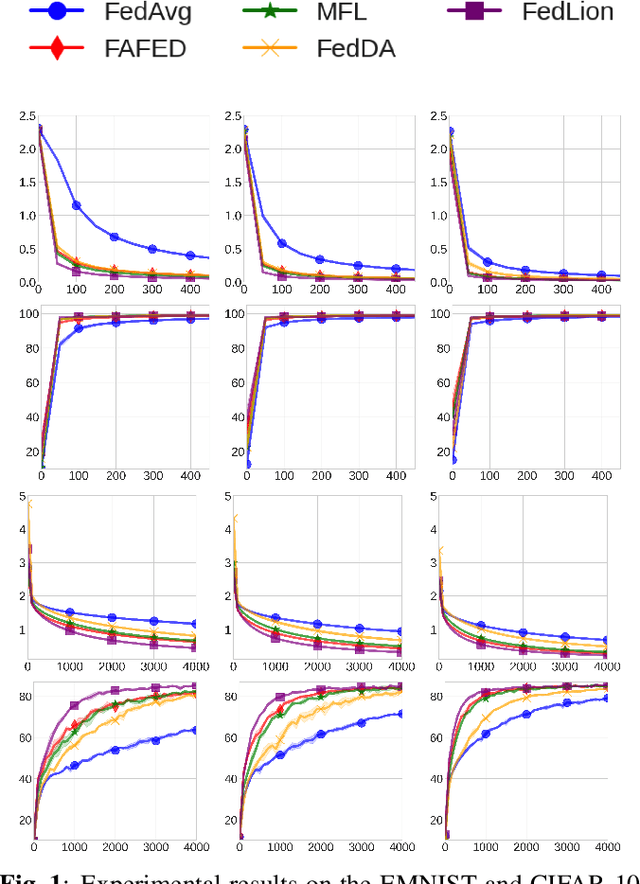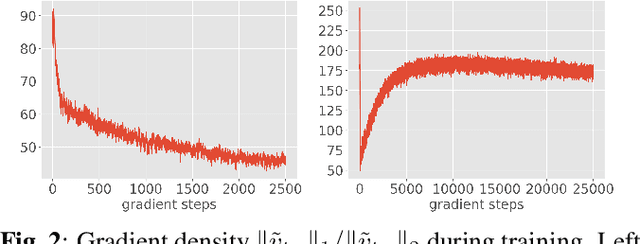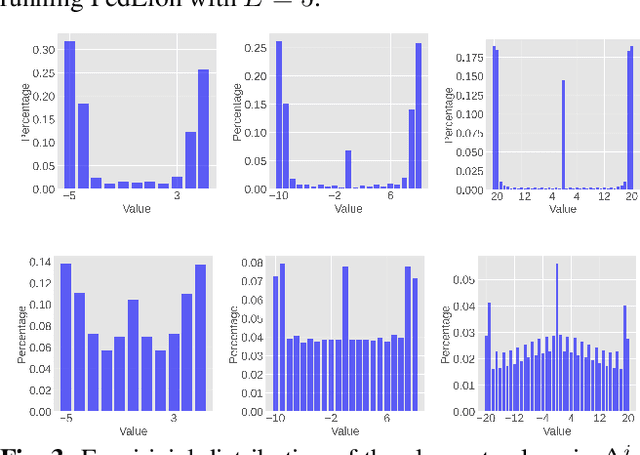Tsung-Hui Chang
Generalized Pinching-Antenna Systems: A Tutorial on Principles, Design Strategies, and Future Directions
Oct 15, 2025Abstract:Pinching-antenna systems have emerged as a novel and transformative flexible-antenna architecture for next-generation wireless networks. They offer unprecedented flexibility and spatial reconfigurability by enabling dynamic positioning and activation of radiating elements along a signal-guiding medium (e.g., dielectric waveguides), which is not possible with conventional fixed antenna systems. In this paper, we introduce the concept of generalized pinching antenna systems, which retain the core principle of creating localized radiation points on demand, but can be physically realized in a variety of settings. These include implementations based on dielectric waveguides, leaky coaxial cables, surface-wave guiding structures, and other types of media, employing different feeding methods and activation mechanisms (e.g., mechanical, electronic, or hybrid). Despite differences in their physical realizations, they all share the same inherent ability to form, reposition, or deactivate radiation sites as needed, enabling user-centric and dynamic coverage. We first describe the underlying physical mechanisms of representative generalized pinching-antenna realizations and their associated wireless channel models, highlighting their unique propagation and reconfigurability characteristics compared with conventional antennas. Then, we review several representative pinching-antenna system architectures, ranging from single- to multiple-waveguide configurations, and discuss advanced design strategies tailored to these flexible deployments. Furthermore, we examine their integration with emerging wireless technologies to enable synergistic, user-centric solutions. Finally, we identify key open research challenges and outline future directions, charting a pathway toward the practical deployment of generalized pinching antennas in next-generation wireless networks.
Pinching-Antenna System Design with LoS Blockage: Does In-Waveguide Attenuation Matter?
Aug 10, 2025Abstract:In the literature of pinching-antenna systems, in-waveguide attenuation is often neglected to simplify system design and enable more tractable analysis. However, its effect on overall system performance has received limited attention in the existing literature. While a recent study has shown that, in line-of-sight (LoS)-dominated environments, the data rate loss incurred by omitting in-waveguide attenuation is negligible when the communication area is not excessively large, its effect under more general conditions remains unclear. This work extends the analysis to more realistic scenarios involving arbitrary levels of LoS blockage. We begin by examining a single-user case and derive an explicit expression for the average data rate loss caused by neglecting in-waveguide attenuation. The results demonstrate that, even for large service areas, the rate loss remains negligible under typical LoS blockage conditions. We then consider a more general multi-user scenario, where multiple pinching antennas, each deployed on a separate waveguide, jointly serve multiple users. The objective is to maximize the average sum rate by jointly optimize antenna positions and transmit beamformers to maximize the average sum rate under probabilistic LoS blockage. To solve the resulting stochastic and nonconvex optimization problem, we propose a dynamic sample average approximation (SAA) algorithm. At each iteration, this method replaces the expected objective with an empirical average computed from dynamically regenerated random channel realizations, ensuring that the optimization accurately reflects the current antenna configuration. Extensive simulation results are provided to the proposed algorithm and demonstrate the substantial performance gains of pinching-antenna systems, particularly in environments with significant LoS blockage.
Diffusion Sampling Path Tells More: An Efficient Plug-and-Play Strategy for Sample Filtering
May 29, 2025Abstract:Diffusion models often exhibit inconsistent sample quality due to stochastic variations inherent in their sampling trajectories. Although training-based fine-tuning (e.g. DDPO [1]) and inference-time alignment techniques[2] aim to improve sample fidelity, they typically necessitate full denoising processes and external reward signals. This incurs substantial computational costs, hindering their broader applicability. In this work, we unveil an intriguing phenomenon: a previously unobserved yet exploitable link between sample quality and characteristics of the denoising trajectory during classifier-free guidance (CFG). Specifically, we identify a strong correlation between high-density regions of the sample distribution and the Accumulated Score Differences (ASD)--the cumulative divergence between conditional and unconditional scores. Leveraging this insight, we introduce CFG-Rejection, an efficient, plug-and-play strategy that filters low-quality samples at an early stage of the denoising process, crucially without requiring external reward signals or model retraining. Importantly, our approach necessitates no modifications to model architectures or sampling schedules and maintains full compatibility with existing diffusion frameworks. We validate the effectiveness of CFG-Rejection in image generation through extensive experiments, demonstrating marked improvements on human preference scores (HPSv2, PickScore) and challenging benchmarks (GenEval, DPG-Bench). We anticipate that CFG-Rejection will offer significant advantages for diverse generative modalities beyond images, paving the way for more efficient and reliable high-quality sample generation.
Robust Federated Learning in Unreliable Wireless Networks: A Client Selection Approach
Feb 26, 2025Abstract:Federated learning (FL) has emerged as a promising distributed learning paradigm for training deep neural networks (DNNs) at the wireless edge, but its performance can be severely hindered by unreliable wireless transmission and inherent data heterogeneity among clients. Existing solutions primarily address these challenges by incorporating wireless resource optimization strategies, often focusing on uplink resource allocation across clients under the assumption of homogeneous client-server network standards. However, these approaches overlooked the fact that mobile clients may connect to the server via diverse network standards (e.g., 4G, 5G, Wi-Fi) with customized configurations, limiting the flexibility of server-side modifications and restricting applicability in real-world commercial networks. This paper presents a novel theoretical analysis about how transmission failures in unreliable networks distort the effective label distributions of local samples, causing deviations from the global data distribution and introducing convergence bias in FL. Our analysis reveals that a carefully designed client selection strategy can mitigate biases induced by network unreliability and data heterogeneity. Motivated by this insight, we propose FedCote, a client selection approach that optimizes client selection probabilities without relying on wireless resource scheduling. Experimental results demonstrate the robustness of FedCote in DNN-based classification tasks under unreliable networks with frequent transmission failures.
RadSplatter: Extending 3D Gaussian Splatting to Radio Frequencies for Wireless Radiomap Extrapolation
Feb 18, 2025Abstract:A radiomap represents the spatial distribution of wireless signal strength, critical for applications like network optimization and autonomous driving. However, constructing radiomap relies on measuring radio signal power across the entire system, which is costly in outdoor environments due to large network scales. We present RadSplatter, a framework that extends 3D Gaussian Splatting (3DGS) to radio frequencies for efficient and accurate radiomap extrapolation from sparse measurements. RadSplatter models environmental scatterers and radio paths using 3D Gaussians, capturing key factors of radio wave propagation. It employs a relaxed-mean (RM) scheme to reparameterize the positions of 3D Gaussians from noisy and dense 3D point clouds. A camera-free 3DGS-based projection is proposed to map 3D Gaussians onto 2D radio beam patterns. Furthermore, a regularized loss function and recursive fine-tuning using highly structured sparse measurements in real-world settings are applied to ensure robust generalization. Experiments on synthetic and real-world data show state-of-the-art extrapolation accuracy and execution speed.
When GNNs meet symmetry in ILPs: an orbit-based feature augmentation approach
Jan 24, 2025Abstract:A common characteristic in integer linear programs (ILPs) is symmetry, allowing variables to be permuted without altering the underlying problem structure. Recently, GNNs have emerged as a promising approach for solving ILPs. However, a significant challenge arises when applying GNNs to ILPs with symmetry: classic GNN architectures struggle to differentiate between symmetric variables, which limits their predictive accuracy. In this work, we investigate the properties of permutation equivariance and invariance in GNNs, particularly in relation to the inherent symmetry of ILP formulations. We reveal that the interaction between these two factors contributes to the difficulty of distinguishing between symmetric variables. To address this challenge, we explore the potential of feature augmentation and propose several guiding principles for constructing augmented features. Building on these principles, we develop an orbit-based augmentation scheme that first groups symmetric variables and then samples augmented features for each group from a discrete uniform distribution. Empirical results demonstrate that our proposed approach significantly enhances both training efficiency and predictive performance.
Distributed Signal Processing for Extremely Large-Scale Antenna Array Systems: State-of-the-Art and Future Directions
Jul 23, 2024Abstract:Extremely large-scale antenna arrays (ELAA) play a critical role in enabling the functionalities of next generation wireless communication systems. However, as the number of antennas increases, ELAA systems face significant bottlenecks, such as excessive interconnection costs and high computational complexity. Efficient distributed signal processing (SP) algorithms show great promise in overcoming these challenges. In this paper, we provide a comprehensive overview of distributed SP algorithms for ELAA systems, tailored to address these bottlenecks. We start by presenting three representative forms of ELAA systems: single-base station ELAA systems, coordinated distributed antenna systems, and ELAA systems integrated with emerging technologies. For each form, we review the associated distributed SP algorithms in the literature. Additionally, we outline several important future research directions that are essential for improving the performance and practicality of ELAA systems.
Tuning-Free Alignment of Diffusion Models with Direct Noise Optimization
May 29, 2024Abstract:In this work, we focus on the alignment problem of diffusion models with a continuous reward function, which represents specific objectives for downstream tasks, such as improving human preference. The central goal of the alignment problem is to adjust the distribution learned by diffusion models such that the generated samples maximize the target reward function. We propose a novel alignment approach, named Direct Noise Optimization (DNO), that optimizes the injected noise during the sampling process of diffusion models. By design, DNO is tuning-free and prompt-agnostic, as the alignment occurs in an online fashion during generation. We rigorously study the theoretical properties of DNO and also propose variants to deal with non-differentiable reward functions. Furthermore, we identify that naive implementation of DNO occasionally suffers from the out-of-distribution reward hacking problem, where optimized samples have high rewards but are no longer in the support of the pretrained distribution. To remedy this issue, we leverage classical high-dimensional statistics theory and propose to augment the DNO loss with certain probability regularization. We conduct extensive experiments on several popular reward functions trained on human feedback data and demonstrate that the proposed DNO approach achieves state-of-the-art reward scores as well as high image quality, all within a reasonable time budget for generation.
Accelerating Parallel Sampling of Diffusion Models
Feb 15, 2024



Abstract:Diffusion models have emerged as state-of-the-art generative models for image generation. However, sampling from diffusion models is usually time-consuming due to the inherent autoregressive nature of their sampling process. In this work, we propose a novel approach that accelerates the sampling of diffusion models by parallelizing the autoregressive process. Specifically, we reformulate the sampling process as solving a system of triangular nonlinear equations through fixed-point iteration. With this innovative formulation, we explore several systematic techniques to further reduce the iteration steps required by the solving process. Applying these techniques, we introduce ParaTAA, a universal and training-free parallel sampling algorithm that can leverage extra computational and memory resources to increase the sampling speed. Our experiments demonstrate that ParaTAA can decrease the inference steps required by common sequential sampling algorithms such as DDIM and DDPM by a factor of 4~14 times. Notably, when applying ParaTAA with 100 steps DDIM for Stable Diffusion, a widely-used text-to-image diffusion model, it can produce the same images as the sequential sampling in only 7 inference steps.
FedLion: Faster Adaptive Federated Optimization with Fewer Communication
Feb 15, 2024


Abstract:In Federated Learning (FL), a framework to train machine learning models across distributed data, well-known algorithms like FedAvg tend to have slow convergence rates, resulting in high communication costs during training. To address this challenge, we introduce FedLion, an adaptive federated optimization algorithm that seamlessly incorporates key elements from the recently proposed centralized adaptive algorithm, Lion (Chen et al. 2o23), into the FL framework. Through comprehensive evaluations on two widely adopted FL benchmarks, we demonstrate that FedLion outperforms previous state-of-the-art adaptive algorithms, including FAFED (Wu et al. 2023) and FedDA. Moreover, thanks to the use of signed gradients in local training, FedLion substantially reduces data transmission requirements during uplink communication when compared to existing adaptive algorithms, further reducing communication costs. Last but not least, this work also includes a novel theoretical analysis, showcasing that FedLion attains faster convergence rate than established FL algorithms like FedAvg.
 Add to Chrome
Add to Chrome Add to Firefox
Add to Firefox Add to Edge
Add to Edge